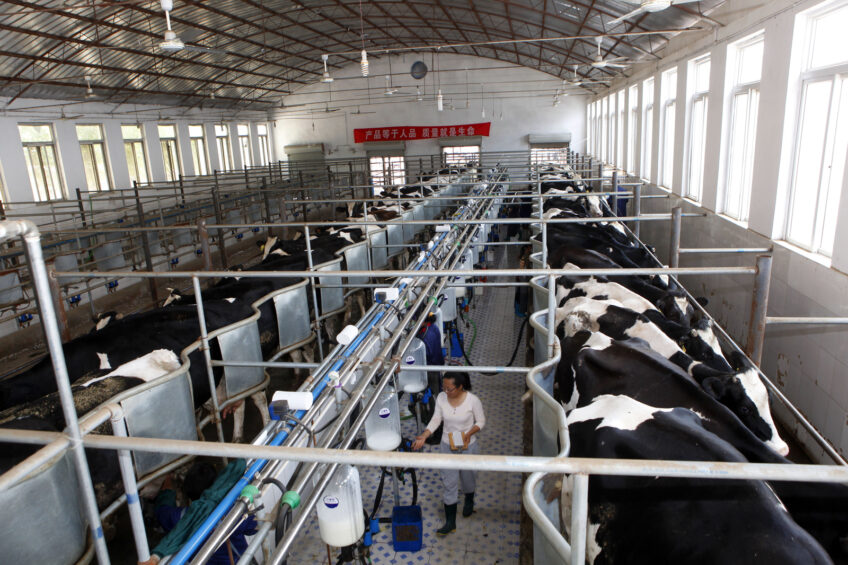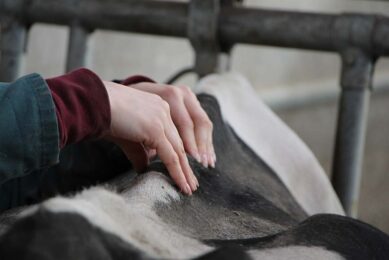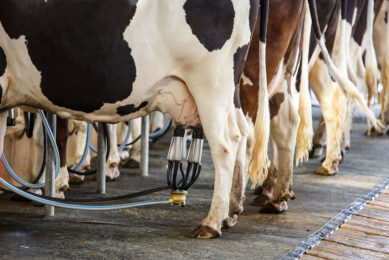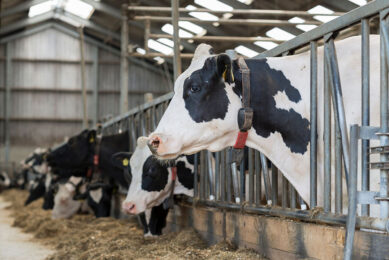China is not a cheap place to produce milk

James Charteris-Hough, managing director of ABCA (part of AB Agri, the agricultural division of Associated British Foods), is based in China. He has a clear view on the developments in dairy, which he demonstrates in various presentations. Charteris-Hough and Roel Leferink from Dairy Digest had a Q+A session on the implications of China’s rapid development.
Is this development a China only story or do you think it will repeat itself soon in countries with a large population like Indonesia, Philippines, Vietnam, Pakistan, Korea? When can we expect this development (maybe front group, followers et cetera)?
I feel this story is pretty specific to China as there are some special conditions relating only to China – scale of course being one of them – that makes it different. The consumption of milk and milk products per capita was very low in China so that gives fantastic scope for growth. Not the least because such growth is also actively encouraged by the government with a number of initiatives aimed to encourage increased milk intake, especially by children. Unfortunately a number of health scares – melamine being the main one but not the only one – have dented peoples’ confidence in domestic milk products – especially infant formula, with the effects we are now seeing in trying to access more supplies from overseas. Other markets such as Korea and Japan are much more mature and established, however one might see countries such as Vietnam and the Philippines follow suit to China, albeit on a more modest scale and issues such as forage supply are likely to present similar development issues.
Which lessons learnt from China (and maybe India) will be important for the future growth and development of dairy farming? What are the do’s and don’ts?
Unlike India whose vast milk production is still very fragmented with relatively few large scale producers, the picture in China is however changing rapidly. The Chinese government is supporting moves to reduce backyard production and the village milk collection centres which are seen as introducing risk into the food chain. However, the trend in China to large scale units of 1,000 to 10,000 cows (including young stock) is not without its problems. Aside from the expected health challenges in such large scale units other practical problems such as; supply of imported breeds / production animals, access to forage (of good quality), ability to recruit and hold skilled livestock / business managers and effluent management. These problems are being overcome to a greater or lesser degree but some of the lessons learnt are that such issues can be difficult and should not be understated. Cash flow is also an on-going problem for expanding businesses and the funding requirement is sometimes forgotten, putting severe financial constraints on such operations.
What will be the role of foreign suppliers of dairy, but also genetics, equipment, feed, management right now and the near future, with the expected explosion of domestic production?
There is still a role for foreign suppliers in terms of bringing technology and expertise to the Chinese market, and nutrition consultants often from the US are widely used. However there will be rapid development in the Chinese knowledge base so this advantage or contribution may not be long lived. Equipment manufacturers do see China and other SE Asian markets as big targets – the area of TMR feeder wagons would be a good example of this where many of the European manufacturers already have or are looking to tie up successful routes to markets for their machines. It is very likely that the domestic producers will quickly copy such machinery and cheapen the price so sound development strategies are required by machinery importers. In the medium or long-term the future is in the production of machinery and dairy inputs to be nearer to the customer – this applies particularly to China where barriers to international business products can be significant. The animal welfare, production systems for milk in China at least have attracted little attention to date. Most of TV advertising shows cows in lush green grass where the reality is usually, stock indoors or in a small yard 365 days a year and whilst in many cases such stock are managed quite well to enable productivity, there could come a time when the image of dairy is dented through the intensive farming methods employed.

What will be the requirements and issues regarding nutrition, feed (fibres) and genetics?
Production or availability of good quality fibre is now and is likely to remain a key problem in the nutrition of highly productive livestock. Imported dairy genetics are mostly from countries using grass or grass silage of a good quality and this is unlikely to be available. Even forage maize growing is limited, which has encouraged increasing imports of alfalfa or oat hay from the US and Australia. In the future there will be a growing need to focus more on the forage element of the diet and also make better use of co-products from the food and drinks industries. There is potentially a good opportunity to advance cost effective technologies with enzymes or alternative treatments to improve the digestibility of the coarse fibre in corn stalks and cobs, also in bagasse in sugar cane producing areas.
We all know there are serious animal health issues in China, for example foot and mouth disease (FMD). Seems to me like a big danger for the growing number of large scale farms. How can we protect these big investments? Given the stance of the Chinese government, had the disease policy also changed in order to protect the sector and if so, what’s being done to eradicate FMD?
I would have to say that I am not an expert at all in the animal health policy in China. The current status is not one of eradication but of containment – hence the vaccination policy. Many larger farms do have effective biosecurity measures already in place to safeguard against incoming infection and this will become standard in due course but naturally there cannot be 100% protection.
If I summarise your vision, key dynamics are that expanding dairy business need…
1. Cash?
Yes – is an ongoing problem which either directly slows growth or puts pressure on suppliers. More commonly larger businesses seek outside private or public investment within China or Hong Kong.
2. Effluent management?
The larger units need to invest in effluent treatment plants – these can create energy but are a significant cost.
3. Quality feed ingredients and fibres?
Yes, especially fibrous products – they seek supplies of quality fibre from imported products such as alfalfa and try to grow themselves or get contract grown forage maize or local alfalfa (typically of lower quality) – the local Chinese provinces are encouraging the latter.
4. Improved (genetic) stock?
Just stock and import price issue.
Combined, is quite a constraint in my eyes. How will they deal with these factors?
Yes there are constraints but current margins on milk and the outlook on growth is stimulating businesses to make these investments. But it would be a mistake to believe that China is a cheap place to produce milk.
Join 13,000+ subscribers
Subscribe to our newsletter to stay updated about all the need-to-know content in the dairy sector, two times a week.










